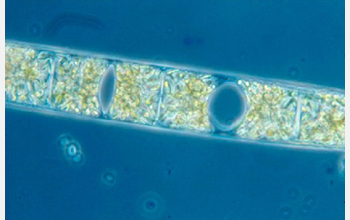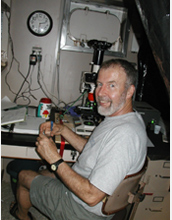All Images
News Release 08-124
Outflow from World's Largest River --the Amazon--Powers Atlantic Ocean Carbon "Sink"
Microbes in tropical ocean waters lead to increased carbon uptake
This material is available primarily for archival purposes. Telephone numbers or other contact information may be out of date; please see current contact information at media contacts.

True-color image of the Amazon River outflow, which extends thousands of kilometers into the Atlantic Ocean.
Credit: Norman Kuring/NASA
Download the high-resolution JPG version of the image. (3.7 MB)
Use your mouse to right-click (Mac users may need to Ctrl-click) the link above and choose the option that will save the file or target to your computer.
A large plume of nutrient-rich waters flows from the Amazon River thousands of kilometers out into the ocean. It was believed that the tropical oceans were nutrient poor and had a low carbon uptake. Biological oceanographer Ajit Subramaniam and marine scientist Doug Capone discuss their new findings which show high carbon uptake and sequestration in tropical waters as photoplankton rapidly grow, fix nitrogen, take up CO2, and sink rapidly to the bottom.
Credit: Columbia University/University of Southern California/National Science Foundation

Symbiotic bacteria inside microscopic life forms called diatoms take nitrogen from the air, enabling them to thrive in the nutrient-poor tropical Atlantic Ocean.
Credit: David Caron
Download the high-resolution JPG version of the image. (696 KB)
Use your mouse to right-click (Mac users may need to Ctrl-click) the link above and choose the option that will save the file or target to your computer.

Oceanographer Edward Carpenter of San Francisco State University looks at diatoms through a microscope.
Credit: Edward Carpenter
Download the high-resolution JPG version of the image. (988 KB)
Use your mouse to right-click (Mac users may need to Ctrl-click) the link above and choose the option that will save the file or target to your computer.
